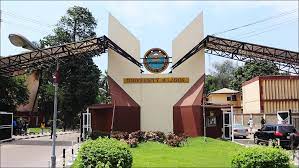
The arterial system in the lower limb plays a vital role in delivering oxygenated blood to the muscles, bones, and tissues of the leg. It is responsible for providing the necessary nutrients and oxygen that enable proper functioning and movement.
The importance of the arterial system in the lower limb cannot be overstated. It ensures the continuous supply of oxygen and nutrients to support cellular metabolism, tissue repair, and overall leg health. The arteries in the lower limb are responsible for delivering oxygen-rich blood from the heart to the lower extremities, including the thigh, calf, and foot.
These arteries have unique anatomical features that allow them to withstand the forces exerted during movement while maintaining a steady and efficient blood flow. Additionally, the arteries in the lower limb help regulate body temperature by facilitating heat exchange between the core and the extremities.
Understanding the functions of the arterial system in the lower limb is crucial in recognizing the impact of arterial diseases and appreciating the significance of maintaining a healthy blood supply to promote optimal leg function and overall well-being.
Anatomy of the Arteries in the Lower Limb
Major arteries in the lower limb: The lower limb is supplied by a network of arteries that ensure the delivery of oxygenated blood. The major arteries in the lower limb include the femoral artery, popliteal artery, anterior tibial artery, and posterior tibial artery. These arteries play a crucial role in supplying blood to specific regions of the leg, facilitating proper functioning and movement.
The femoral artery: The femoral artery is a large artery located in the thigh. It is a continuation of the external iliac artery and serves as the main blood supply to the lower limb. The femoral artery gives rise to various branches, including the deep femoral artery and the superficial epigastric artery, which contribute to the blood supply of different structures in the leg.
The popliteal artery: The popliteal artery is situated behind the knee joint and is a continuation of the femoral artery. It gives off branches that supply blood to the muscles, ligaments, and skin in the posterior aspect of the knee and lower leg.
The anterior tibial artery: The anterior tibial artery is a branch of the popliteal artery and extends down the front of the leg. It provides blood supply to the muscles, bones, and skin of the anterior compartment of the lower leg, including the dorsum of the foot.
Posterior tibial artery: The posterior tibial artery is another branch of the popliteal artery that travels down the back of the leg. It supplies blood to the posterior compartment of the lower leg, including the calf muscles, as well as the plantar aspect of the foot.
Understanding the anatomy of these major arteries in the lower limb is crucial for assessing blood flow, diagnosing arterial diseases, and determining appropriate treatment strategies to maintain optimal leg function and overall health.
Functions of the Arteries in the Lower Limb
The role of arterial blood flow in the lower limb: Arterial blood flow in the lower limb is essential for sustaining the metabolic needs of the muscles, bones, and tissues. Oxygenated blood, carried by the arteries, provides the necessary nutrients and oxygen for cellular respiration and energy production. Adequate arterial blood flow ensures optimal functioning and performance of the lower limb, enabling activities such as walking, running, and other physical movements.
The supply of arterial blood to different regions of the lower limb: The arteries in the lower limb supply blood to various regions, ensuring proper perfusion. The femoral artery gives rise to branches that supply the thigh, while the popliteal artery provides blood to the knee joint and the muscles and structures around it. The anterior tibial artery supplies the anterior compartment of the lower leg and the dorsum of the foot, while the posterior tibial artery nourishes the posterior compartment of the lower leg and the plantar aspect of the foot. Each artery's branches ensure a comprehensive blood supply to specific regions, supporting the functional requirements of those areas.
Impact of impaired arterial blood supply to the muscles and bones of the lower limb: Impaired arterial blood supply can have significant consequences for the muscles and bones in the lower limb. Reduced blood flow, often due to arterial diseases such as peripheral artery disease (PAD), can lead to tissue ischemia (lack of oxygen) and compromised cellular function. Muscles may become weak, fatigued, and prone to cramping, while bones may be at an increased risk of poor healing and decreased bone density.
Severe arterial insufficiency can even lead to tissue necrosis and the development of ulcers. Prompt diagnosis and treatment of arterial diseases are crucial to minimize the impact of impaired blood supply and preserve the health and function of the muscles and bones in the lower limb.
Arterial Diseases in the Lower Limb
Arterial diseases that affect the lower limb: Arterial diseases in the lower limb can disrupt the normal blood flow, leading to significant health issues. Peripheral artery disease (PAD) is one of the most common arterial diseases, characterized by the narrowing or blockage of arteries due to atherosclerosis. Other conditions include arterial embolism, thrombosis, and aneurysms. These diseases can restrict blood flow, impair oxygen and nutrient delivery, and potentially result in tissue damage, pain, and functional limitations.
Symptoms associated with these conditions: Symptoms of arterial diseases in the lower limb vary depending on the severity and location of the blockage. Common signs include intermittent claudication (leg pain during exercise), numbness or tingling, muscle weakness, slow-healing wounds or ulcers, and changes in skin color or temperature. Severe cases may lead to critical limb ischemia, characterized by constant pain, non-healing ulcers, and tissue necrosis.
Diagnosis and treatment options for arterial diseases in the lower limb: Diagnosis of arterial diseases in the lower limb involves a combination of medical history, physical examination, and diagnostic tests such as ankle-brachial index (ABI), ultrasound, angiography, or magnetic resonance angiography (MRA). Treatment options depend on the specific condition and its severity. Lifestyle modifications such as smoking cessation, regular exercise, and a healthy diet are crucial. Medications may be prescribed to manage underlying risk factors or improve blood flow. In more severe cases, surgical interventions like angioplasty, stenting, or bypass surgery may be necessary to restore blood flow and alleviate symptoms. Early diagnosis and prompt intervention are essential for preventing complications and preserving the health and function of the lower limb in individuals with arterial diseases.
The arterial system in the lower limb plays a vital role in delivering oxygenated blood to the leg's muscles, bones, and tissues. Understanding the anatomy, functions, and diseases of the arteries in the lower limb is crucial for maintaining leg health and overall well-being. Proper arterial blood flow supports optimal leg function, while impaired blood supply can lead to various complications and symptoms.
It is essential for individuals to prioritize their arterial health in the lower limb. This can be achieved through adopting a healthy lifestyle that includes regular exercise, a balanced diet, and avoiding risk factors such as smoking. Routine check-ups with healthcare professionals can help identify early signs of arterial diseases and allow for timely intervention.
The arterial system in the lower limb is integral to maintaining leg health and function. By understanding the importance of arterial blood flow, recognizing the symptoms of arterial diseases, and seeking appropriate medical care, individuals can take proactive steps towards preserving their arterial health and minimizing the impact of arterial diseases on their quality of life. Remember, a healthy lower limb arterial system supports mobility, vitality, and overall well-being.






















